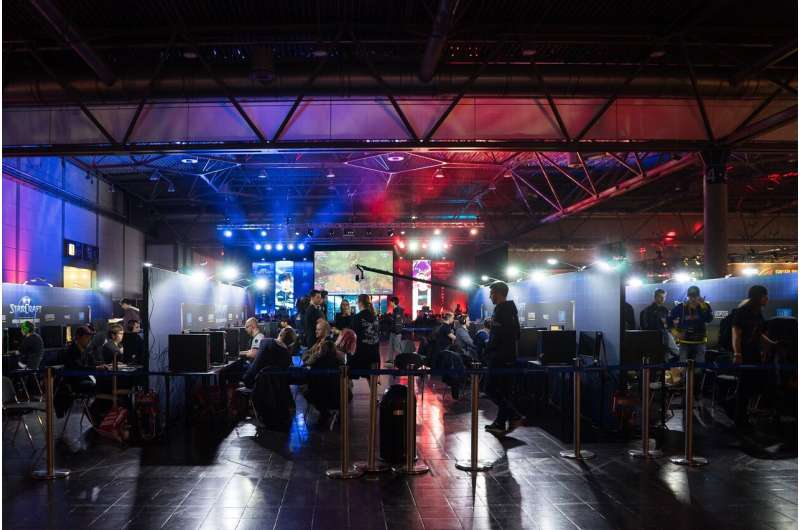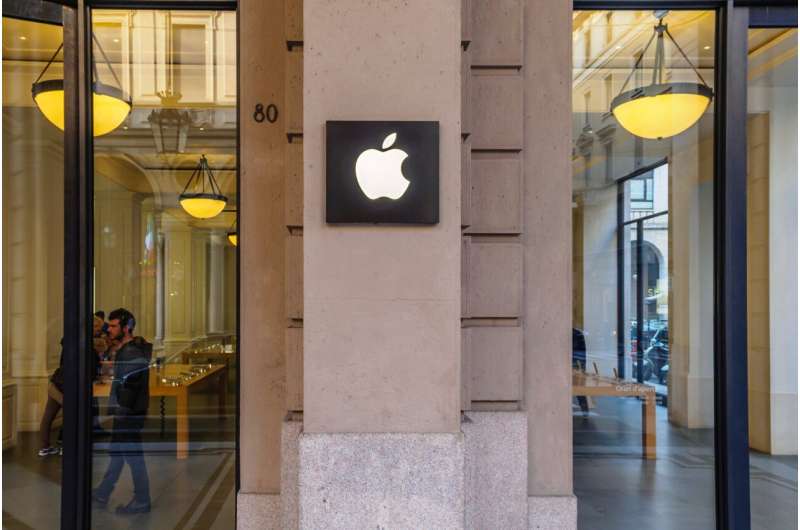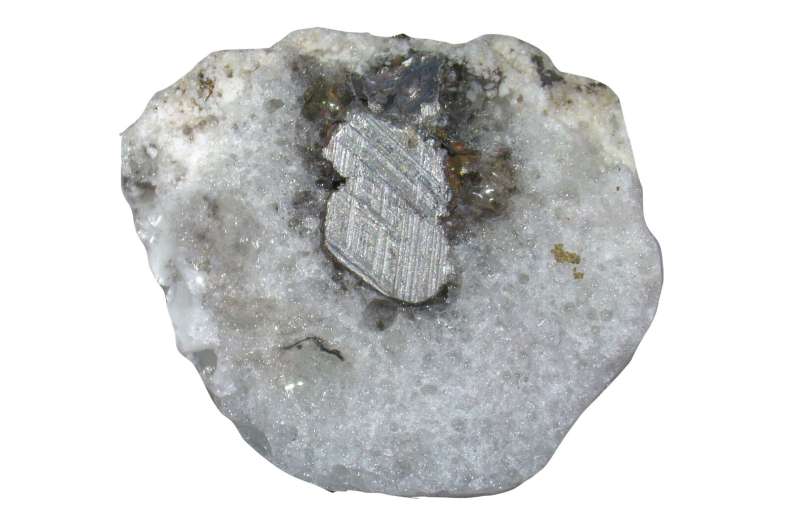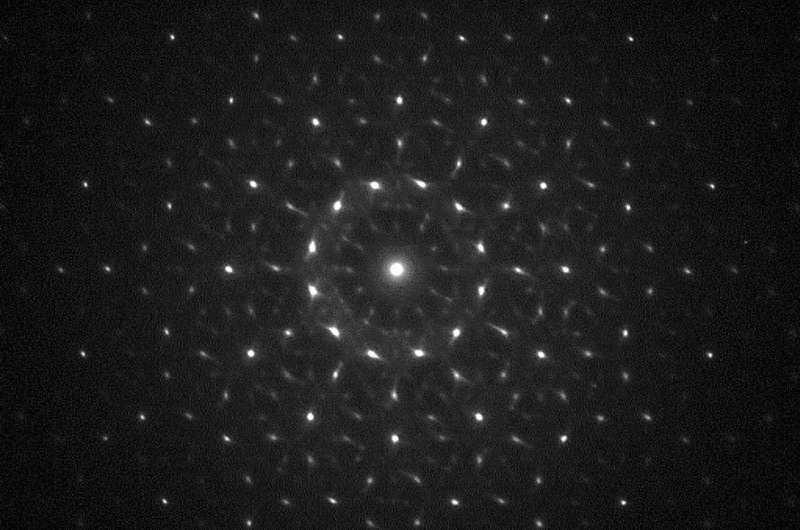Why 'Call of Duty' game matters to the FTC in Microsoft-Activision deal
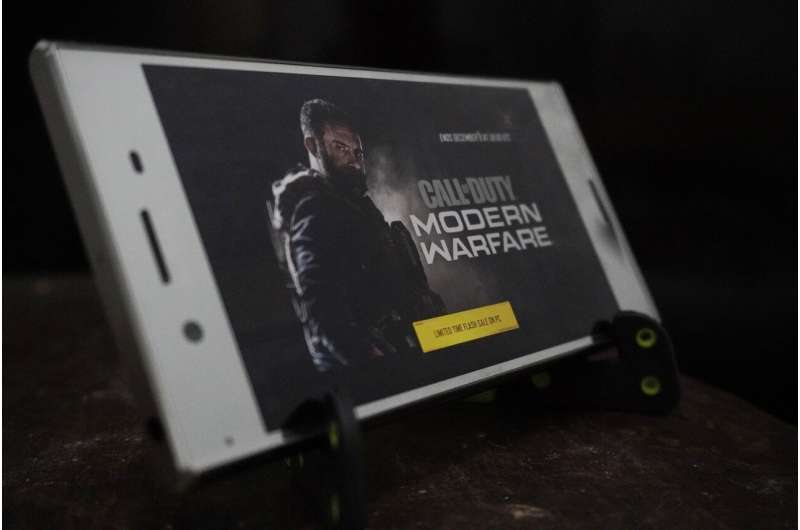
Vancouver, Washington, resident Michael Feist has logged nearly 163 hours on "Call of Duty: Modern Warfare II" since it was released two months ago.
That's nearly a week spent at virtual war on his Xbox Series X, and exactly the kind of commitment Xbox-maker Microsoft is investing in by acquiring gamemaker Activision Blizzard for $69 billion. The 27-year-old and his brothers took days off work to play when it came out.
"Call of Duty," one of the most successful video game franchises ever, has been in Feist's life ever since he was a child. He used to wait in line at GameStop for the latest "Call of Duty" release with his stepdad.
They weren't the only ones—the 19-year-old military-themed franchise has generated over $30 billion in revenue, with 425 million units sold.
Now, "Call of Duty" is at the center of a legal battle surrounding Microsoft's largest-ever acquisition, the purchase of "Call of Duty" owner Activision Blizzard. The company approved Microsoft's nearly $69 billion acquisition bid in April. In the months since, regulators in the U.S. have assailed the deal as anticompetitive and moved to block it. It is undergoing regulatory scrutiny in the U.K. and European Union.
The deal would be among the 30 largest acquisitions in history. It dwarfs Amazon's $8.5 billion acquisition of MGM earlier this year and Microsoft's largest successful acquisition so far, the 2016 purchase of professional network platform LinkedIn for $26.2 billion.
Microsoft competes with Sony and Nintendo in the video game world, but remains in last place, according to Microsoft. With the acquisition, the Redmond-based tech giant wants to become more competitive in the industry.
"Its vision for the transaction is simple: Xbox wants to grow its presence in mobile gaming, and three-quarters of Activision's gamers and more than a third of its revenues come from mobile offerings," according to Microsoft.
The Activision acquisition didn't sit well with the Federal Trade Commission, the newly emboldened federal agency tasked with stopping monopolies from forming. Microsoft's promises to make key games such as "Call of Duty" available on more platforms haven't swayed the FTC. Commissioners claimed the acquisition is anticompetitive in a complaint filed earlier this month.
"With control of Activision's content, Microsoft would have the ability and increased incentive to withhold or degrade Activision's content in ways that substantially lessen competition—including competition on product quality, price and innovation," the complaint says.
Microsoft contests the claim that the deal would give it any sort of monopoly. Xbox and Activision, the company said last Friday in a response to the FTC lawsuit, "are just two of hundreds of game publishers, who compete by providing different types of games on different platforms at different prices, ranging all the way down to $0."
A key to the legal fight? "Call of Duty."
"The FTC's case is all about … one game, "Call of Duty," " Microsoft President Brad Smith said during the company's annual shareholder meeting in December.
Activision has released a new "Call of Duty" installment every year since 2003, when the shooting game debuted. This year's Modern Warfare II generated $1 billion in sales in the first 10 days following its Oct. 28 release, despite the $70 price tag.
Modern Warfare II includes a story mode, a cooperative mode and a multiplayer platform offering players a soldier's-eye view of battles historical and imagined. "Call of Duty" game developers have consulted with Pentagon advisers on the battle mechanics to make them as lifelike as possible. The franchise's biggest draw is the multiplayer mode, which allows teams of gamers to square off against each other, sometimes in championships.
"Call of Duty" has been the bestselling game of its release month for a record 14 consecutive years, said Mat Piscatella, a video game industry adviser with research company The NPD Group.
"It doesn't get much bigger than "Call of Duty," " Piscatella said.
Platforms such as Xbox and Sony's PlayStation get revenue from "Call of Duty" in two ways: game sales and in-game transactions. Players can buy special weapons and gun "skins," making it a long-term revenue source for platforms, said Joshua Foust, who has written about the video game industry and consumer identities.
Sony is worried about losing this long-term revenue source if "Call of Duty" is no longer on PlayStation, the world's most popular gaming console, Foust said. Sony claims Microsoft will end PlayStation's access to the game if the acquisition goes through. Sony representatives did not respond to inquiries.
Microsoft, Sony and Nintendo sometimes lock popular games down in exclusive contracts, in the hope that gamers particularly interested in, for example, Mario Bros. or The Last of Us will buy their system and not a competitor's for access to the titles. Sony has 286 exclusive games, while Xbox has 59, Smith said.
The FTC is concerned Microsoft plans to withhold Activision titles, including "Call of Duty," from Sony and other competitors.
In the response to the FTC filed Friday, Microsoft argues it is not financially viable to remove "Call of Duty" from PlayStation.
"Paying $68.7 billion for Activision makes no financial sense if that revenue stream goes away," Microsoft attorneys said in the response. "Nor would it make sense to degrade the game experience and alienate the millions of "Call of Duty" players who play together using different types of consoles."
Microsoft further argued that Xbox and Activision "are just two of hundreds of game publishers, who compete by providing different types of games on different platforms at different prices, ranging all the way down to $0."
Feist has a YouTube channel and Twitter account where he talks about Xbox releases and news using the name XBOXOBI. He said in an interview the deal is protecting the competitor more than the consumer. Sony argues Microsoft could change console and game prices at will without fear of losing market share or consumers, which Sony, as the market leader, already does, Feist said.
He also said PlayStation has exclusive "Call of Duty" in-game deals and content that Xbox doesn't. Microsoft's acquisition would create "console parity," Feist said.
Microsoft has agreements with Nintendo to make "Call of Duty" available on Nintendo consoles. Bellevue, Washington-based Valve, maker of PC platform Steam, said a deal with Microsoft for "Call of Duty" isn't necessary.
Sony has not agreed to a deal.
Microsoft also offered to submit a legally binding consent decree to the FTC that the company would offer "Call of Duty" to Sony and others for a decade.
Some consumers also object to the acquisition. A group of 10 gamers filed a lawsuit last week to stop Microsoft from buying Activision, arguing the deal would suppress competition and reduce consumer choice.
Denzel Dickens, who has been playing "Call of Duty" for more than five years, said that while he has played competing military games such as Battlefield, "Call of Duty" is the most popular and fun. He said every year the gameplay improves and there's more detail. He and four friends play "Call of Duty" online together, he said.
"It's been around for so long, the quality has gotten better over time," said Dickens, who is 32. " "Call of Duty' sets the bar for gameplay and mechanics of military shooters."
Dickens owns an Xbox Series X, a PlayStation 5 and recently got a PC. He plays "Call of Duty" on Xbox and PC, and uses his PlayStation 5 to play console exclusives like "The Last of Us."
Feist said he buys the new "Call of Duty" installment every year and plays with his brothers and friends. He likes the graphics and realism, and was especially excited about the single-player mode in "Modern Warfare II." Feist also has a PlayStation 5 where he plays console exclusives, such as the Spider-Man games.
Industry consolidation
A merger such as Microsoft and Activision's is considered a "vertical merger," said David B. Hoppe, founder and managing partner of San Francisco-based Gamma Law.
Vertical mergers are typically seen as supporting competition, because two companies with complementing services become one, with one profit margin transacting with consumers, Hoppe said. But when the companies are too big, regulators may argue that they stop caring about customers.
In the lawsuit, the FTC claimed Activision is among the "Big 4" biggest video game studios, along with Ubisoft, Take-Two Interactive and Electronic Arts.
Hoppe said the Big 4 denomination leaves out other studios who produce top quality games, as well as the largest video game company in the world, Tencent. Games that are most expensive to make are called "AAA" titles.
"Activision may not have the same dominance in the space of video game development of "AAA' titles as the FTC is suggesting," Hoppe said.
China-based technology and entertainment giant Tencent has made several acquisitions of video game studios, such as the maker of "League of Legends," Riot Games, in 2011. And according to Reuters, the company is currently refocusing its mergers and acquisitions strategy on gaming companies abroad.
Industry consolidation are "bigger, uncertain currents that are going on in the background of a lot of this that's come to a head with what Microsoft is doing with Activision," researcher Foust said.
Microsoft acquired one gaming company last year, ZeniMax Media, for $7.5 billion. ZeniMax is the parent company of Bethesda Softworks, maker of blockbuster games series such as "Fallout" and "The Elder Scrolls."
According to the FTC's complaint, the commissioners' current worries stem from the aftermath of that acquisition. Microsoft had made commitments to the European Commission that it would not make Xbox-exclusive titles.
"But, shortly after the EC cleared the transaction, Microsoft made public its decision to make several of the newly acquired ZeniMax titles, including "Starfield," "Redfall' and "The Elder Scrolls VI," Microsoft exclusives," the complaint states.
Microsoft said in response it honored the commitment and the first two games released by Bethesda after its acquisition—"Deathloop" and "Ghostwire: Tokyo"—became one-year PlayStation exclusives and were available on Xbox afterward. But for future ZeniMax games, the company's decisions would be made "on a case-by-case basis, taking into account player demand and sentiment."
'Games-as-a-service'
Part of Microsoft's offer to Sony includes the right to sell "Call of Duty" as part of Game Pass, Microsoft's gaming subscription service, which Foust calls "games-as-a-service."
While Sony is the dominant player in the video game platform market, Game Pass is the leader in the cloud-gaming subscription market. It launched in 2017 and has more than 25 million subscribers.
According to the FTC, Microsoft's acquisition would also be a way of stifling competition in cloud gaming. The deal would "enable Microsoft to suppress competitors to its Xbox gaming consoles and its rapidly growing subscription content and cloud-gaming business," the commission said in a news release.
Dickens said having "Call of Duty" on Game Pass, which users can subscribe to for $9.99 a month, would eliminate the $70 price and allow him to spend more on in-game transactions.
Dickens also said he thinks Sony will be more inclined to make multiplayer games such as "Call of Duty" if the acquisition goes through. His most-played game this year was Halo Infinite, an Xbox-exclusive shooter game.
Feist said having the game on the cloud can make the game more affordable and accessible—also among the reasons cited by Microsoft to justify the deal.
"If I'm on my lunch break at work, I'm going to be able to have access to play on my phone," Feist said. "I'll jump in and play a quick match."
Due to the length and cost of the FTC process, Hoppe said Microsoft might end up breaking off the agreement. Still, Microsoft has been pushing the deal forward.
"While we believed in giving peace a chance, we have complete confidence in our case," Microsoft's Smith said after the FTC's lawsuit announcement.
2022 The Seattle Times.
Distributed by Tribune Content Agency, LLC.
